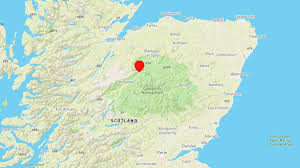Rural - land uses
1/23
Earn XP
Description and Tags
Name | Mastery | Learn | Test | Matching | Spaced |
|---|
No study sessions yet.
24 Terms
Rural
This refers to areas of a country that are less densely populated
Case study: land uses
Cairngorms National Park

What are the seven land uses in the Cairngorms?
Forestry
Hill-sheep farming
Hill-walking
Hydroelectric power (HEP)
Settlement
Tourism
Winter sports
What are the three groups of people who use the land in the Cairngorms?
Tourists
Farmers
locals
What are the four land use conflicts among tourists and locals in the Cairngorms?
Holiday homes
Illegally parked cars
Littering
Traffic congestion
What are the four land use conflicts among tourists and farmers in the Cairngorms?
Footpath erosion control
Leaving gates open
Littering
Unleashed dogs
Holiday homes (tourists and locals)
As tourists continue to buy holiday homes and the demand for more holiday homes increases, house prices in the surrounding area rise, which means locals and new residents are unable to afford to live in or continue to live in Aviemore
Illegally parked cars (tourists and locals)
When it becomes extremely busy tourists sometimes illegally park on narrow streets or across from farm entrances, which increases traffic congestion as vehicles will have to slowly pass around the parked cars
Littering (tourists and locals)
Disposable barbeques, campfires, and picnics are sometimes incorrectly disposed of, which can damage the surrounding area and wildlife, also impacting the scenery of the area
Traffic congestion (tourists and locals)
Many people visit honeypot sites like Aviemore in their cars during peak times such as holidays, which can put pressure on the narrow countryside roads meaning that traffic builds up and accidents can occur
Footpath erosion (tourists and farmers)
Some walkers will walk over plants and verges, creating their own paths rather than using the designated footpaths, which can lead to less grass for farm animals to graze on, soil quality to decrease, and creates visual pollution
Leaving gates open (tourists and farmers)
Tourists often walk through farmland and sometimes leave gates open when exploring the area, which can lead to farm animals escaping and potentially being injured or killed, also impacting traffic congestion if the escaped farm animals find themselves on roads
Littering (tourists and farmers)
If tourists drop litter in fields farm animals could eat the litter, causing them to choke or potentially die, which can affect the farmers income as their farm animals may need medical care or if they die
Unleashed dogs (tourists and farmers)
If dogs are off their leads they could chase or scare farm animals, causing injury, death, or miscarriage, which can affect the farmers income, especially during lambing season as the sheep loose their offspring
What are the four strategies to manage land use conflicts among tourists and locals in the Cairngorms?
Anti-littering campaign
Improved parking areas
Improving public transport
Restrictions on second-home ownership
What are the four strategies to manage land use conflicts among tourists and farmers in the Cairngorms?
Education
Footpath erosion control
Installation of kissing gates
Legislation on dog walking
Anti-littering campaign and its effectiveness (tourists and locals)
The Scottish Government initiated a nation wide campaign to educate people on littering and ‘leaving no trace’ in order to educate people on responsible disposal of litter, which is effective at reducing visual pollution and damaging wildlife as they could choke on litter
Improved parking areas and its effectiveness (tourists and locals)
Cairngorms National Park Authority has new designated carparks near attractions to minimize traffic disruptions and have put clear signs up to inform people not to illegally park, which is effective as this protects sensitive wildlife habitats
Improving public transport and its effectiveness (tourists and locals)
Cairngorms National Park Authority has developed ‘transforming transport’ that aims to develop high-quality walking and cycling connections from Aviemore to the cairngorms carpark, which is effective as this reduces the number of cars on the road, reducing pollution and illegal parking
Restrictions on second-home ownership and its effectiveness (tourists and locals)
To prevent depopulation, regulations to restrict second-home ownership have been introduced that aims to discourage tourists from buying holiday homes and encourages locals to stay in the area, which is effective as this monitors and enforced the prevention of any loopholes
Education and its effectiveness (tourists and farmers)
Cairngorms National Park Authority has launched educational campaigns and interactive centres like Glenmore visitor centre to raise awareness at the importance of preserving ecosystems, which is effective at improving understanding of responsible outdoor practices
Footpath erosion control and its effectiveness (tourists and farmers)
Park rangers are employed to inspect and repair footpaths, they can use natural materials like logs to stabilise footpaths to prevent further erosion, which is ineffective as this can be very costly and time consuming
Installation of kissing gates and its effectiveness (tourists and farmers)
Farmers have installed ‘kissing gates’ to allow pedestrians to pass through gates but not farm animals, which is ineffective as cyclists and horse riders cannot use them
Legislation on dog walking and its effectiveness (tourists and farmers)
Throughout the Cairngorms, farmers have put up signs reminding people to keep their dogs on the lead, in order to reduce injuries, deaths, and miscarriages of sheep, which is effective as this threatens people with a £40,000 fine or a year in prison